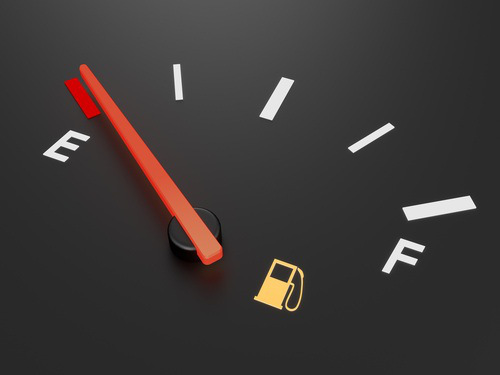First let’s begin with the anatomy of a fuel gauge to see how it works. There are two main parts:
1. Sender, which measures the level of fuel in the tank.
2. Gauge, which displays that level to the driver.
The sender, located in the fuel tank of the car, consists of a float, usually made of foam. As its name suggests, it floats on the surface of the gas in the tank. The level of the float in the tank affects the amount of electrical current that passes through the sender back to the gauge, moving the needle in the gauge accordingly.
This may seem relatively simple and foolproof, but there are a few things to be conscious of:
… it takes a long time for the needle to move after a trip to the gas station.
This is because the fuel has to drop below a certain level for the float to begin to drop. When your tank is full, the float is at its maximum raised position and submerged, so the gas gauge needle won’t move until the float is actually floating and able to move down in the tank.
… you still have plenty of gas in your tank when the needle on your gas gauge reaches the empty mark.
Oftentimes, the range of motion of the float does not extend to the very bottom of the tank. This means that there still be fuel in your tank even if the gauge reads “empty.”
More recently the newest model year vehicles have microprocessor controlled gauges eliminating a lot of the discrepancy. This system uses a microprocessor that acts as an intermediary between the sender and the gauge. Instead of the electrical current traveling directly to the gauge, the electrical output is read by the microprocessor, which then communicates the information to the gauge. This kind of a fuel gauge is more accurate because engineers can calibrate them to compensate for the custom shape of the vehicle’s specific gas tank.
Microprocessor controlled gauges can also be calibrated to fix the inaccuracy of the needle when it is on the “full” and “empty” marks. However, it turns out that most people are not bothered by the vague estimates that the gas gauge provides. In fact, consumer surveys indicate that people like it that way. Phil Pierron, one of the engineers at Ford, says, “Our customers really did not want to run out of fuel when they hit ‘E’ they would rather have some fuel available to them when they get to ‘E.’” The surveys showed that people also don’t like to see the needle depart from “F” right away, so engineers calibrate the gas gauges this way intentionally.

How does your car’s fuel gauge work?
by
Tags:

Leave a Reply